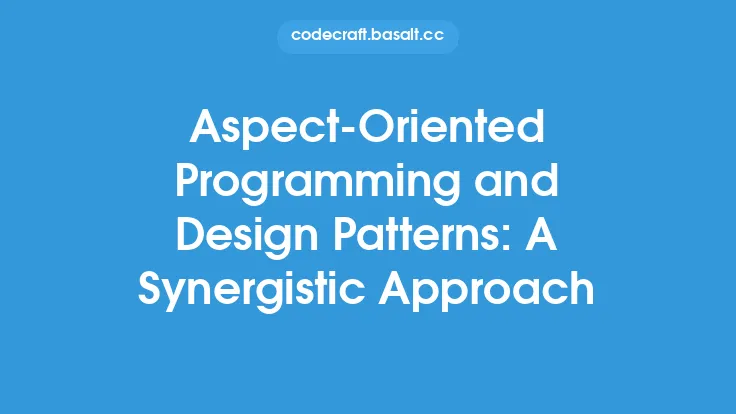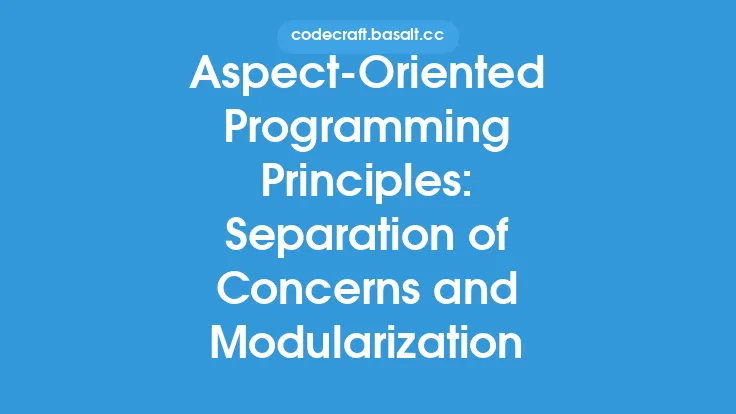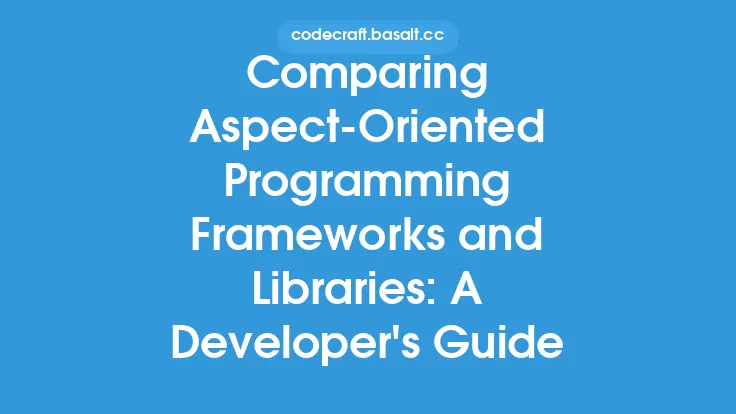Aspect-Oriented Programming (AOP) is a programming paradigm that aims to increase modularity and reusability in software development by allowing developers to modularize cross-cutting concerns. Cross-cutting concerns are aspects of a program that cut across multiple modules or objects, such as logging, security, and caching. These concerns are often scattered throughout the codebase, making it difficult to maintain and modify the program.
History of Aspect-Oriented Programming
The concept of AOP was first introduced in the 1990s by Gregor Kiczales and his team at Xerox PARC. They recognized the need for a new programming paradigm that could address the limitations of traditional object-oriented programming (OOP) in handling cross-cutting concerns. The first AOP language, AspectJ, was developed in the late 1990s and has since become a widely used AOP framework.
Key Concepts in Aspect-Oriented Programming
AOP introduces several new concepts that are essential to understanding the paradigm. These include:
- Aspects: Aspects are modules that encapsulate cross-cutting concerns. They are designed to be reusable and can be applied to multiple parts of the program.
- Join points: Join points are points in the program where an aspect can be applied. These can include method calls, field accesses, and exception handling.
- Pointcuts: Pointcuts are used to specify which join points an aspect should be applied to. They are essentially a way of selecting which parts of the program an aspect should affect.
- Advices: Advices are the code that is executed when an aspect is applied to a join point. They can be thought of as the implementation of the cross-cutting concern.
Aspect-Oriented Programming Languages and Frameworks
There are several AOP languages and frameworks available, each with its own strengths and weaknesses. Some popular AOP frameworks include:
- AspectJ: AspectJ is a widely used AOP framework for Java. It provides a comprehensive set of features for defining and applying aspects.
- Spring AOP: Spring AOP is a framework for Aspect-Oriented Programming that is built on top of the Spring Framework. It provides a simple and intuitive way of defining and applying aspects.
- JBoss AOP: JBoss AOP is a framework for Aspect-Oriented Programming that is built on top of the JBoss Application Server. It provides a comprehensive set of features for defining and applying aspects.
Benefits of Aspect-Oriented Programming
AOP provides several benefits, including:
- Improved modularity: AOP allows developers to modularize cross-cutting concerns, making it easier to maintain and modify the program.
- Increased reusability: Aspects can be reused across multiple parts of the program, reducing code duplication and improving productivity.
- Simplified code: AOP can simplify code by removing cross-cutting concerns from the main program logic.
Challenges and Limitations of Aspect-Oriented Programming
While AOP provides several benefits, it also has some challenges and limitations. These include:
- Steep learning curve: AOP requires a significant amount of time and effort to learn, especially for developers who are new to the paradigm.
- Debugging complexity: AOP can make debugging more complex, as the flow of execution can be difficult to follow.
- Performance overhead: AOP can introduce performance overhead, especially if aspects are not optimized properly.
Real-World Applications of Aspect-Oriented Programming
AOP has several real-world applications, including:
- Logging and auditing: AOP can be used to implement logging and auditing functionality in a program.
- Security: AOP can be used to implement security features, such as authentication and authorization.
- Caching: AOP can be used to implement caching functionality, improving the performance of a program.
Conclusion
Aspect-Oriented Programming is a powerful paradigm that can help developers improve modularity and reusability in software development. By providing a way to modularize cross-cutting concerns, AOP can simplify code and improve productivity. While AOP has some challenges and limitations, its benefits make it a valuable tool for developers. As the software development landscape continues to evolve, AOP is likely to play an increasingly important role in the development of complex software systems.





